#non paleo
Text
[Grabs you and turns you into this]

#non paleo#my art#wip#nondescript dromaeosaur#yes i finally went on to finish that model i am proceeding with sculpting atm
187 notes
·
View notes
Text
Happy Pride from the RAINBOWSAURS! 🦖🦕✨🏳️⚧️🌈
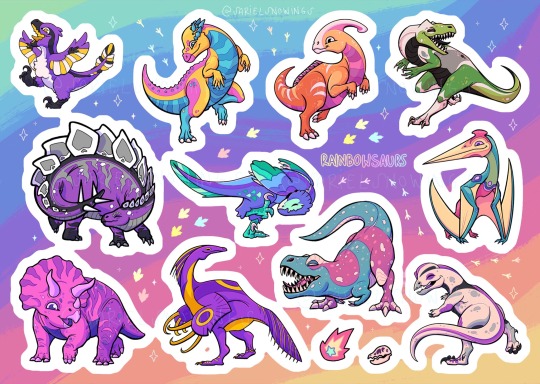
I love these dinos, they were such a joy to make, hope you all will like them as much as I do!
Also, did you know? THEY’RE ALL PUNS!
You can show off your queer and paleontology skills and try to guess them all, but if you need some help I hid all the answers on the image ALT text above ;)
I’ve been working on these cuties on and off for the past year and a half (thanks to my patrons) and now they’re finally compiled in one sticker sheet!
Both this sheet and the individual stickers (which are bigger and feature cool glitter and holographic effects) will be available in my online Etsy store once it reopens in September after convention season is over.

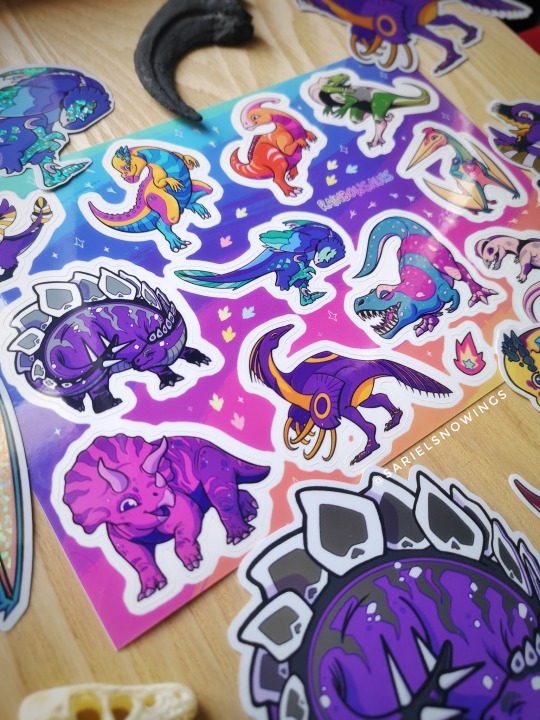
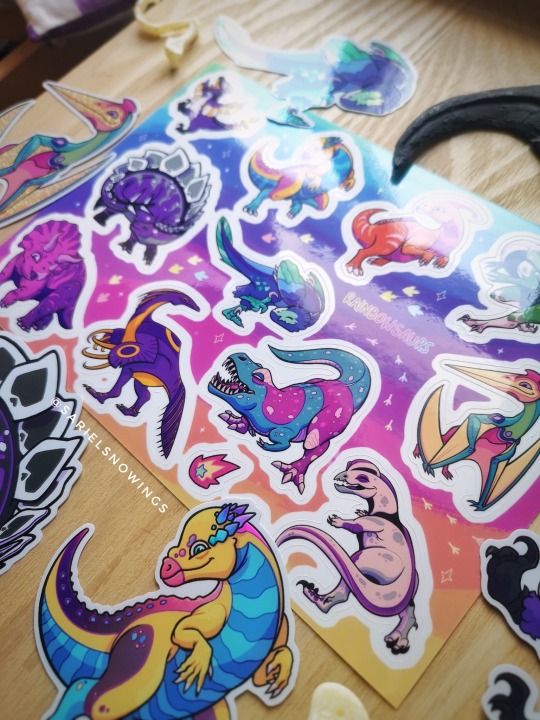
#sarielsnowingsart#queer artist#trans artist#queer art#paleoart#paleo art#dinosaurs#pride dinos#pride art#pride stickers#non binary#pansexual#sapphic#lesbian#aromantic#asexual#gay#transgender#trans#queer#intersex#bisexual#demisexual
271 notes
·
View notes
Note
Does the Alligator Girl have a name yet?

miacerra (pronounced like mia + sarah all in one)
#ask answer#anon#i was gonna name her miacis after the character in oppel's darkwing cuz i thought that was a nice sounding name for a female carnivore#but miacis is named that bc she's a paleo cat#so i just modified it for a non existing name#gator girl#miacerra#mia's world
70 notes
·
View notes
Text
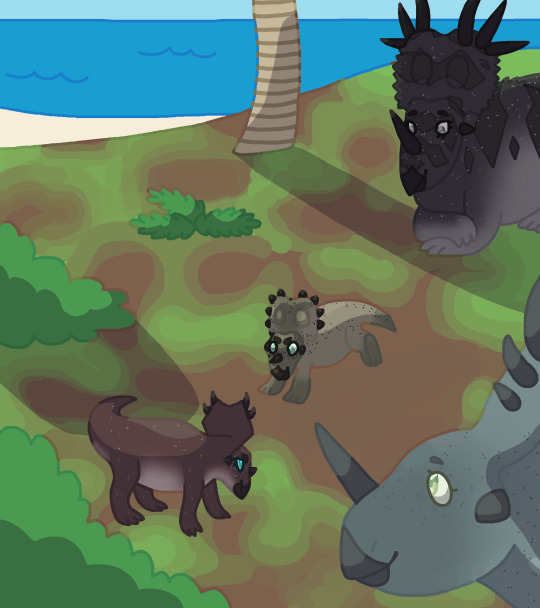
[Image description: A stylized digital drawing of four styracosaurus by the sea. In the top right corner of the drawing, a dark gray adult styracosaurus with light gray eyes & darker markings similar to a diamondback rattlesnake is lying in shade provided by a palm tree and watching two juveniles, a grayish greenish one with pale blue-green eyes & dark brown freckles charging at her clutchmate who is brown with pale freckles all over and bright blue eyes. In the bottom right corner of the drawing, a blue-gray styracosaurus with darker gray freckles and pale green eyes is also watching them, only her head visible. There is also a fern & two bushes in the background, and everyone is smiling. End of image description]
I did another quest on primeval age! peater & gwenn love to play fight ^w^
the adult styracosaurus in the top right corner is maeve, who was designed by mechanic-drone and belongs to aegis
the adult styracosaurus in the bottom right corner is pisces, a primeval age npc who was designed by goblingrins
the little greenish styracosaurus charging her brother is gwenn, who was designed by & belongs to sollyraptor
and the little brown styracosaurus standing his ground is peater, my own character that i designed myself!
#styracosaurus#ceratopsidae#ceratopsia#non-avian dinosaurs#dinosaurs#paleoart#paleo art#art#digital art#my art#fawnrats art#primeval age
5 notes
·
View notes
Note
w.what are paleos
In Which a Pronoun Enthusiast Explains
paleo(s) is short for paleopronouns! they’re pronouns from older languages that are no longer in use (think, a pronoun set from Old Western Beforan)
#any non-feminine paleos are fine with me :)#oh shoutout to shreddit and pronoun.fiendom for the term!#secyel answers
4 notes
·
View notes
Text
Heads up, everyone! PRI is kickstarting another non-dinosaur paleo plush toy
3 notes
·
View notes
Text
okay so like how deep does percy’s marine knowledge go. can he tell me the abundance of carbon 14 in long island sound? oh my god after all the roman stuff does he randomly know latin names of animals.
freaks annabeth out by calling that humpback whale that hangs around the island Megaptera novaeangliae
#pjo#this isn’t funny but like genuinely i’d like to see a more scientific approach to pjo .#does that make sense ??#everyone is a writer/artist i want percy to undergo deep ecosystem restoration#i will write an entire fic about this actually but it will be very hard to get through for non nerds#oh my god okay sorry can nico bring back prehistoric animals#i’d like percy to have a stellar’s sea cow#that’s not related to my original point btw i just like the idea#unless i go a paleo route w it waittt
5 notes
·
View notes
Text
i really would love to become a paleoartist properly and draw stupid versions of prehistoric animals, but my issue is: i am a character artist first and foremost as much as i want to be a nature artist
#dook dook#i think at this point i have as many paleo tagged pieces as i do character pieces#but. still.#plus it makes me feel obligated to draw non characters (like plants and full backgrounds)#and im so fucking bad at them so i dont do them (i know practice would make me better but a bitch is DUMB!)#i do like doing them i think it adds a lot but im SOBS AND CRIES AND WHIMPERS AND WAILS AND#im a lazy poo artist so#lol
0 notes
Note
What’s the deal with Basque. It’s a language isolate but are the Basque people like an “ethnic isolate”? Are the Basque people significantly genetically different than neighboring peoples? Is there any particular reason everyone else in Europe was either exterminated or assimilated by the Indo-Europeans, at least to the point that they adopted IE languages—but not the Basques?
Regarding genetics, I can't really say. Genetics is way outside my area of expertise, and looking online it doesn't appear that there's a real consensus. It appears that the general picture is that they have some amount of local hunter-gatherer ancestry and some amount of admixture from steppe populations, which is qualitatively the same as the rest of Europe. They may have these things in different proportions(?) than other European populations, or something like that; it sounds like a number of the studies disagree with each other. I think I'd have to have a better understanding of human genetics in general to give a more confident assessment of what is going on.
Linguistically speaking, Basque is the only non-IE language spoken in Western Europe today (Uralic languages, such as Finnish and Hungarian, are spoken in Eastern Europe, although they are probably later arrivals to the region than even IE), but it is not the only non-IE spoken in Western Europe within recorded history. The collective name for the languages spoken in the Iberian peninsula before the Roman conquest is the paleo-Iberian or Paleohispanic languages; of these, several were not Indo-European. Aquitanian in particular is generally identified as a direct ancestor of Basque. But there were also others, scantily attested, that may or may not have been related. These existed alongside Continental Celtic languages in the region.
There was also Etruscan, in Italy, which was non-IE. Etruscan civilization largely predated the Romans in the area and was highly influential on them; the Latin alphabet is principally adapted from the Etruscan alphabet (itself adapted from Greek), and Latin borrowed a number of words from Etruscan. Some of these have even made their way into English, for instance the very common word person, from Latin persōna "mask", possibly from Etruscan phersu "mask".
Anyway, whether or not any of these languages represent holdovers of the pre-IE linguistic environment in Europe is hard to say. For instance, some have argued that the Etruscans or their ancestors were actually late arrivals from somewhere south, possibly Anatolia. But I don't think there is any conclusive evidence for or against such ideas.
It is worth noting that ethnic and linguistic groupings very often don't align. Groups may remain ethnically distinct while adopting a majority language, or may remain linguistically distinct while losing a sense of ethnic identity, and so on. So genetic studies are often-useful-but-highly-imperfect proxies for linguistic relatedness, and vice versa. For instance, most of the "Negrito" peoples of South East Asia are highly genetically distinct from neighboring populations, but many of them speak Aslian languages related (distantly) to Vietnamese and Khmer. These languages are clearly distinct, but should not be misunderstood as holdovers predating the spread of genetically East Asian people to the region.
My understanding is that the evidence regarding Basque points to it being as pre-IE holdout in Western Europe. However, this need not say much about the genetics of the Basque people.
In any case, as to the question of "why" it held out when other pre-IE languages disappeared? I think it's kind of impossible to say. Presumably the mountainous and isolated nature of the Basque Country played a role; indeed all the studies I looked at seemed to say that genetically Basque people showed signs of isolation within the last thousand years or so, suggesting that they did not have as much contact with other European populations. But, beyond that, if you look at the fact that other pre-IE (or at least non-IE) languages survived in Western Europe until the historical period (Etruscan and some paleo-Iberian), it is perhaps not so surprising that at least one of them would make it to the modern day. Basque looks like a complete outlier now, but going back even 2000 years and there were a number of other languages in its position. In some sense the Indo-European migration into Europe was "not that long ago", on archeological timescales, so perhaps things like this are to be expected.
96 notes
·
View notes
Text
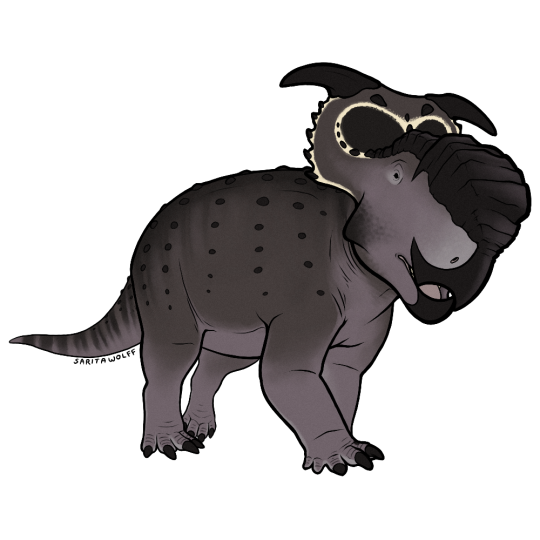
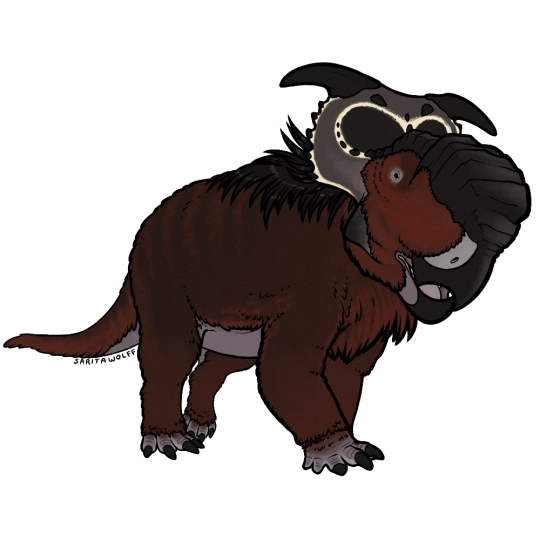
A Patreon request for rome.and.stuff (Instagram) - Pachyrhinosaurus perotorum… that I went a bit overboard with lol. I’ve been waiting for an excuse to draw my favorite ceratopsian, and to digitally adapt my old Pachy marker drawing design.
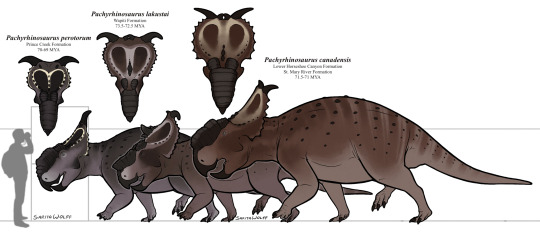
So! Pachyrhinosaurus! As seen above, there were three known species of Pachyrhinosaurus, living in different locations and eras in Late Cretaceous North America.
The oldest, P. lakustai, was native to the Wapiti Formation of Alberta and British Columbia, Canada. It’s known for the extra spikes it has at the center of its frill.
The slightly younger P. canadensis was native to the lower Horseshoe Canyon Formation and the St. Mary River Formation of Alberta and northwestern Montana. It was the largest of the three.
The youngest, P. perotorum, was native to the Prince Creek Formation of Alaska. As this ceratopsid seemingly stayed put during the long, dark, cold Alaskan Winters, it likely had adaptations for keeping warm.

The depiction of a “woolly” Pachyrhinosaurus was first popularized by Mark Witton as a speculative work, but the trope has prevailed. While many paleontologists find a heavy feather covering on a centrosaurine to be highly unlikely, and maintain that the animal’s size and homeothermy would have kept it warm enough, we still have no skin impressions to suggest that P. perotorum was fully scaly. So a feather coating is not completely out of the question (though it is unlikely). Still, I love the look of a woolly Pachyrhinosaurus and how it challenges our previous conceptions of non-avian dinosaurs. Stranger things exist in nature. I had to include a “woolly” option, especially since I already use the guy as my avatar on my paleo Instagram account, SaritaPaleo.
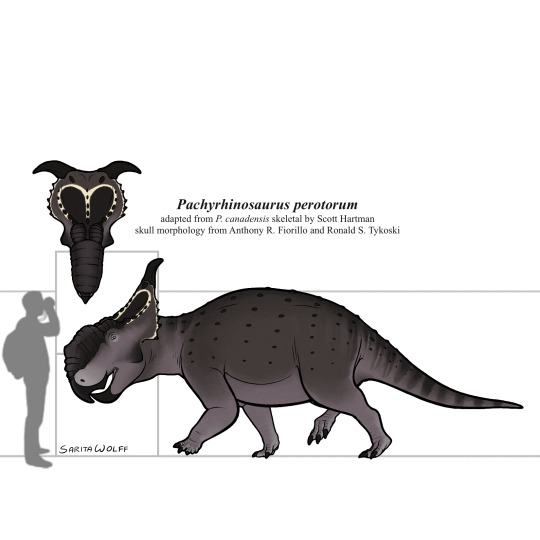
Pachyrhinosaurus was particularly unique in that it seemingly traded off something that had previously worked for other ceratopsians, horns, for a large nasal boss instead. For Pachyrhinosaurus, a battering ram worked better than a sword.
It was herbivorous, using its strong cheek teeth to chew tough, fibrous plants. Perhaps during the dark and cold Winters, P. perotorum would have also dug for roots or even scavenged carcasses. At any rate, from observations of their unusually conspicuous growth banding, it appears growth for P. perotorum would have been stunted during the harsh Winter, but was extremely rapid in the warmer months, an adaptation for the Alaskan climate.
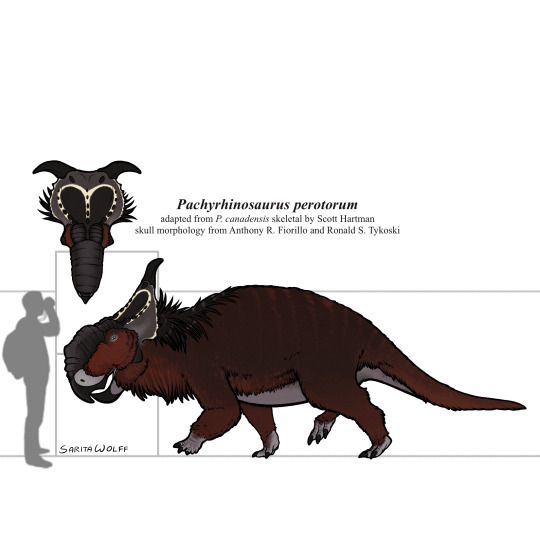
The tundra of the Prince Creek Formation housed a surprising amount of diversity. Pachyrhinosaurus perotorum would have lived alongside smaller ceratopsians like Leptoceratopsids, as well as other ornithischians like the pachycephalosaurine Alaskacephale and the hadrosaurid Edmontosaurus. Theropods such as Dromaeosaurus and Saurornitholestes, as well as a yet unidentified giant Troodontid, lived here as well. P. perotorum’s main predator would have been the tyrannosaur Nanuqsaurus. Small mammals were also somewhat common here, such as Cimolodon, Gypsonictops, Sikuomys, Unnuakomys, and an indeterminate marsupial.
(Btw, the request tier for Patreon starts at only $5 a month. 😉 Link is pinned at the top of my blog.)
#my art#SaritaDrawsPalaeo#Pachyrhinosaurus#Pachyrhinosaurus perotorum#Pachyrhinosaurus lakustai#Pachyrhinosaurus canadensis#Centrosaurines#ceratopsians#ceratopsids#ornithischians#dinosaurs#archosaurs#archosauromorphs#reptiles#Prince Creek Formation#Wapiti Formation#Horseshoe Canyon Formation#St. Mary River Formation#Late Cretaceous#Canada#United States of America
78 notes
·
View notes
Text
So anyway you know that thing when you see art of a non-mammalian creature and you can very clearly tell the artist only knows how to draw canine anatomy ?
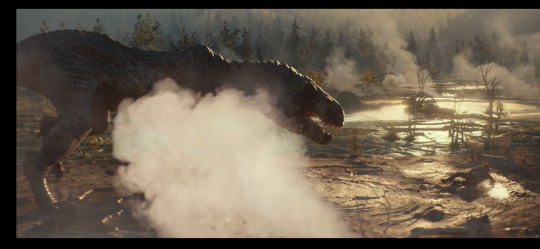
yeah.
#the more years pass the more theropods get thin-waisted in movies#i genuinely don't understand this trope#non paleo#dinosaurs#65 movie
72 notes
·
View notes
Text
ANNOUNCEMENT!
To anyone interested in the Rainbowsaur Sticker Sheet, NOW’S YOUR CHANCE!
It’s my birthday month so as a way to celebrate I’ll be sending this sticker sheet to everyone who joins the “Final Render” tier on my Patreon (15$) during August.
More info on this public post on my Patreon.
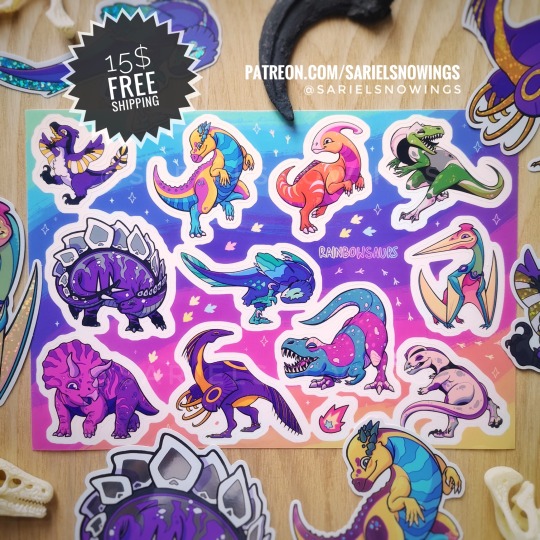

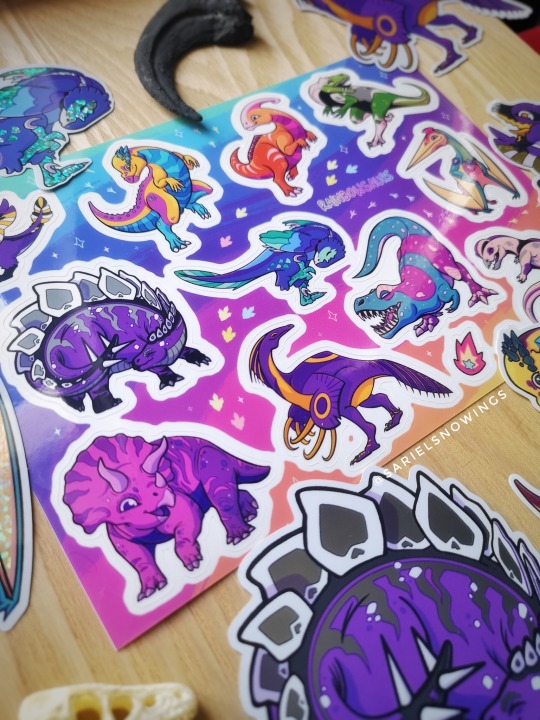
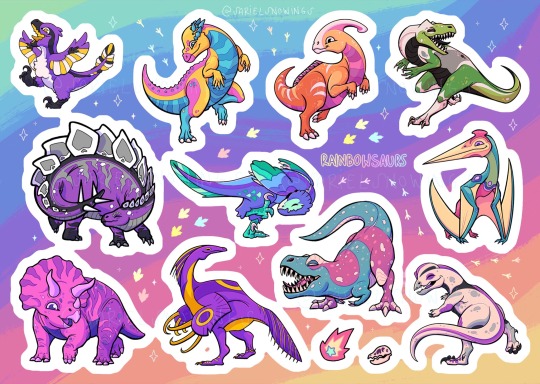
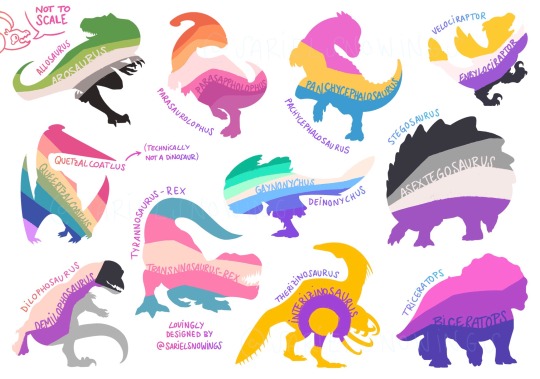
Tell your friends! <3
#rainbowsaurs#sarielsnowingsart#dinosaurs#paleoart#paleo art#pride dinosaurs#queer dinosaurs#queer artist#queer stickers#queer merch#dinosaur merch#non binary#pansexual#lesbian#aromantic#asexual#bisexual#gay#sapphic#transgender#trans#demisexual#intersex#queer
149 notes
·
View notes
Photo

Map of known Paleo-European languages, including substrate languages.
The Paleo-European languages are the mostly unknown languages that were spoken in Europe prior to the spread of the Indo-European and Uralic families caused by the Bronze Age invasion from the Eurasian steppe of pastoralists whose descendant languages dominate the continent today. Today, the vast majority of European populations speak Indo-European languages, but until the Bronze Age, it was the opposite, with Paleo-European languages of non-Indo-European affiliation dominating the linguistic landscape of Europe.
279 notes
·
View notes
Note
I’m curious. Do you have any mercenary headcannons?
Don't really have much hcs for each of them FJDKSLF but here ya go!!^^
They're all coffee addicts.
Striker doesn't drink and opts for non-alcoholic alternatives instead when going out with their coworkers.
They do occasionally mess around on the job, but they get back to work quickly.
Victim has clear favoritism towards Striker, which the mercs find annoying.
Paleo barely has technological literacy and can't do things like emailing (like a grandma trying to use a phone).
50 notes
·
View notes
Note
I'm so genuinely sorry you guys are being slandered by radical right. This game has become a comfort game to me and it so nice to see the pride dinos. It's also reassuring to me as Non-binary Aro/Ace person to see how much your company cares about the LGBTQ+.
You guys are doing great and Paleo Pines is truly a wonderful game! The community is wonderful and you guys are wonderful!
Hey anon! Thank you so much <3 I love seeing a proud dino in the wild, it's always so exciting! and i'm so glad that we were able to add bi and ace dinos to the pride lineup in December (a load of our team and community really wanted to see them- and our lead artist did a great job!)
Our community really is wonderful, we're so thankful we've got so many amazing folks around us!
48 notes
·
View notes
Text
9 Things Not to Say to Someone With Anxiety
1. “Calm down.”
Telling someone to “calm down” has never, ever made it happen. Those words are not magic and definitely not helpful. If the person experiencing anxiety had the ability to calm down in that moment, they’d absolutely do it. To someone with anxiety, this all-too-common phrase is patronizing and annoying. What to do instead: Model calm. Talk gently. Slow your breathing to dispel your own rising anxiety. Try saying something like, “I’m here for you,” “I’m here to listen,” or “I’ll stay with you.”
2. “It’s not a big deal.”
Most people with anxiety know that some of their thoughts are irrational and out of proportion to the situation at hand, at least in their quiet, non-anxious moments. But when anxiety rears its head, it is huge. It is a big deal because it’s all-consuming. Telling someone in the middle of an anxiety (or panic) attack that whatever they’re worrying about is “not a big deal” minimizes their very real distress. Validating their feelings is a better response. Try something like, “I can see you’re really worried.”
3. “Why are you so anxious?”
Talk about an impossible question to answer! Sure, some people may occasionally be able to identify the source of their distress in a particular moment, but oftentimes, anxiety and panic attacks strike for no apparent reason. Also not helpful: Attempting to explain to someone why you think they have anxiety and what they should do about it. As one person with anxiety said, “In situations of severe anxiety or a panic attack, I don’t need that—I want someone to listen and be there. They don’t have to do or say anything.”
4. “I know how you feel.”
Unless you also have an anxiety disorder, you have no idea what it feels like to be crippled with anxiety; the butterflies and nerves you experience before a test or important work presentation are not the same. Sharing your experiences with anxiety with a friend in the midst of a panic attack is not helpful. One individual said, “Please don’t create a competition by telling me how your anxiety, or circumstance that caused your anxiety, is so much worse than mine. That doesn’t help.” Instead, say something like, “I’m always here for you.”
5. “Stop worrying.”
A close cousin of “calm down,” “stop worrying” is a completely unhelpful response. More than anything, the person with anxiety wants to stop worrying. But in the moment, worry is not exactly a conscious choice or under voluntary control. Instead, you can help the individual slow down and challenge their anxious thoughts. If a coworker is anxious about a big presentation and convinced she’ll fail, you can say, “It’s totally normal to feel stressed. But I know you’ve prepared and have given great presentations in the past.”
6. “Just breathe.”
Breathing exercises can alleviate anxiety, but they work best when first suggested or practiced during moments of calm. Someone who is already breathing more quickly or shallowly than usual may have a very difficult time shifting their breathing pattern while their mind is spinning. Instead of saying, “just breathe,” model deep breathing. Slow your own breath and breathe in deeply and slowly through the nose and out through gently pursed lips. Note: If the person with anxiety routinely uses breathing exercises to control their anxiety, reminding them to “breathe” may be helpful.
7. “Have you tried [fill in the blank]?”
CBD and essential oils are not a cure for anxiety. Neither is a paleo or gluten-free or vegetarian diet. Exercise, meditation and yoga help some people manage their anxiety, but they’re definitely not a cure-all. Remember: Anxiety is a very individual experience. What helps one person may not help another. Instead of making suggestions, try asking the person with anxiety, “What can I do to help you?” Most people who live with anxiety already know what works and what doesn’t work for them. During moments of calm (and if you are close with the person), you can ask about techniques they’ve tried or what works best for them.
8. “It’s all in your head.”
On some level, people who have anxiety disorders know the worry is ‘all in their head.’ But that doesn’t make their anxiety or fears any less real. Uttering this phrase dismisses their very real concerns and the impact anxiety is having on their lives. Instead, try helping individuals with anxiety connect with the physical world around them. Offer to walk with them. Help them find a quiet place. Turn on some music, if they’re open to it.
9. “Get over it.”
People don’t choose to have anxiety. It’s a health condition, just like diabetes, asthma, or high blood pressure. Telling someone to “get over it” is insensitive at best; at worst, it signals an unwillingness to help the individual deal with a chronic condition and the concern at hand. It’s much more helpful to show your support, even if you don’t truly understand the condition or what it feels like. Try saying something like, “This is tough, but we’ll get through it together.” Back that statement up with action: Stay with them as needed. Help them find treatment, if appropriate. Celebrate successes.
37 notes
·
View notes